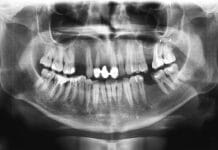Dementia is a pervasive and heartbreaking condition that affects millions of individuals worldwide. As the disease progresses, patients often lose their ability to communicate, making it extremely challenging to identify and treat pain effectively.
This silent suffering has long been a concern for health care professionals and caregivers. However, a study conducted by the Nursing Department at the University of Cordoba, in collaboration with the University of Jaén, has found a new approach to pain diagnosis in people with dementia. Through the analysis of saliva, researchers have shown how two pain biomarkers could serve as a non-invasive and effective tool for diagnosing pain in patients with dementia and impaired communication.1
Pain management in individuals with dementia is a complex issue, particularly as the disease advances and robs patients of their ability to express discomfort. This challenge is exacerbated by the fact that pain and dementia often coexist, especially in older populations. Recognizing and alleviating this hidden pain has become a top priority for health care providers and researchers, prompting new investigations into alternative methods of diagnosis.1
The Nursing Department at the University of Cordoba has been at the forefront of dementia-related research for years, with a specific focus on neurodegenerative diseases like Alzheimer’s disease. In their latest study, researchers Vanesa Cantón, Pilar Carrera, and Manuel Rich, in collaboration with the University of Jaén, have uncovered a promising avenue for identifying pain in dementia patients through the analysis of saliva.1,2
The Study
In their research, the team examined saliva samples from individuals aged 65 and older who were diagnosed with moderate to advanced-stage dementia and had difficulty communicating. They compared these samples to those of a control group of individuals of the same age range without dementia. The goal was to evaluate the levels of two pain biomarkers in saliva: sTNFR2 (soluble tumor necrosis factor receptor 2) and SIgA (immunoglobulin A).1,2
These pain biomarkers are associated with inflammation, a process associated with dementia. The team’s ability to detect these biomarkers in saliva holds great promise because it minimizes the discomfort and invasiveness experienced by patients during sample collection of blood or plasma, especially those in advanced stages of dementia.1,2
The Results
The study found that patients with dementia had decreased levels of sTNFR2 compared to the control group, suggesting a modulation of inflammation in response to pain. In the case of SIgA, there was an increase in this immunoglobulin in dementia patients, indicating an alteration in the immune system response. These results demonstrate the potential utility of these biomarkers in tracking the progression of pain throughout the disease, particularly during its moderate to advanced stages.1,2
Traditionally, the PAINAD scale, which assesses behavioral indicators such as breathing, vocalization, facial expression, body language, and consolability, has been used to detect pain in patients with reduced communication abilities due to dementia. The saliva biomarkers identified in this study offer a complementary and non-invasive approach to confirming the presence of pain. This integration of objective biomarker data with behavioral observations holds great promise in improving the quality of life for patients with dementia.1,2
The potential of using saliva biomarkers for pain diagnosis in patients with dementia is a remarkable breakthrough in health care. Researchers stress the importance of further testing with larger sample sizes, ideally in specific care settings like assisted living facilities. The goal is to validate the efficacy of this innovative approach and make it an integral part of dementia care, ultimately enhancing the quality of life for those living with this challenging condition.1,2
Conclusion
Pain diagnosis in patients with dementia has long been a formidable challenge, but the discovery of pain biomarkers in saliva offers new hope. The Nursing Department at the University of Cordoba’s research has opened doors to a more accurate, non-invasive, and complementary method for identifying pain in individuals with dementia who struggle to communicate their distress. This approach has the potential to transform dementia care and provide much-needed relief to those who silently endure the pain associated with this debilitating disease.
Before you leave, check out the Today’s RDH self-study CE courses. All courses are peer-reviewed and non-sponsored to focus solely on high-quality education. Click here now.
Listen to the Today’s RDH Dental Hygiene Podcast Below:
References
- Cantón-Habas, V., Rich-Ruiz, M., Martínez-Martos, J.M., et al. Determination of Soluble Tumor Necrosis Factor Receptor II and Secretory Immunoglobulin A in Saliva of Patients with Dementia. European Archives of Psychiatry and Clinical Neuroscience. 2024; 274(7): 1689-1696. https://doi.org/10.1007/s00406-023-01693-9
- University of Córdoba. (2023, December 12). Saliva: A Means to Detect Pain in People with Dementia. ScienceDaily. www.sciencedaily.com/releases/2023/12/231212112334.htm












